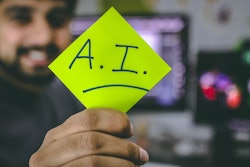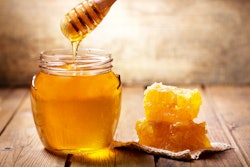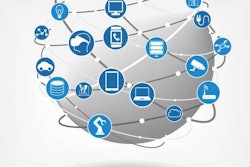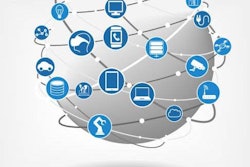
Enterprise resource planning (ERP) and transportation management systems (TMSs) are already widely employed in tracking business activity and shipments while in transit. However, all of these tools do not adequately provide the information required to analyze the supply chain in real time, make up-to-the-minute delivery adjustments and help merchants plan for the next sales season—issues that are paramount in the food and beverage (F&B) industry.
New technologies and solutions related to the Internet of Things (IoT) and Big Data are creating a stir of opportunities, particularly as it relates to omnichannel operations, inventory management, logistics costs, and customer retention and acquisition, wrote Scott Dulman, senior director at Savi Technology, on September 15, 2016, in Supply & Demand Chain Executive, Food Logistics’ sister brand.
More beneficial for companies in F&B, however, is the ability to capture information regarding demand as close to customer needs as possible since this data can take into consideration uncertainties in the market, any disruptions to the supply chain and other factors.
Enter the Benefits of Machine Learning
So, what is machine learning? Machine learning is defined as artificial intelligence that evolved from the study of pattern recognition and computational learning theory, and explores the study and construction of algorithms that can learn and make predictions on data. Simply put, machine learning allows computers the ability to learn without being explicitly programmed. They gain their artificial intelligence by using real-time IoT data, historical data and contextual information.
“Machine learning computer programs teach themselves when exposed to new data,” comments Hank Canitz, product marketing director, Logility. “Machine learning models know which shipments to expedite, which carriers to use, what time is best for clearing customs, and what routes are best for road, ocean and rail.”
While experts maintain widespread use of machine learning has not reached the mainstream, and predict it may be five to 10 years before it is commonly implemented in F&B, Canitz stresses that it’s not too early to understand what this form of artificial intelligence means to the industry. “After all, machine learning is coming to this sector. It’s just a matter of time before it’s widely used in the F&B supply chain,” he says.
Jim Hayden, Savi Technology’s executive vice president of products, emphasizes that the more complex global supply chain networks become, the more businesses will need the algorithmic power of machine learning.
“That’s because machine learning uses a variety of computational and statistical techniques to help identify patterns, trends or anomalies in data,” he says. “These special-purpose algorithms are used to build predictive models.”
Hayden particularly stresses that TMSs and ERP have limited uses. “TMSs are utilized to keep track of what and exactly where a shipment is en route,” he states. “ERP is more a system of record.”
To better explain how quickly machine learning uses algorithms and spits out data, Hayden points to the finance industry and how it benefits from machine learning. “The best examples most people are familiar with are when a financial institution provides your most recent credit score or you get a phone call from your bank regarding algorithms that point to credit card fraud use,” he says.
There’s a host of critical uses for machine learning in the F&B industry. One specific use, he states, could be identifying locations with a higher likelihood for temperature excursion than other locations.
“Machine learning would indicate there’s more risk around that geolocation,” Hayden says.
For example, companies would benefit by learning where or when to avoid certain border crossings where refrigerated trucks may have to idle for hours before being allowed to cross and clear customs.
“Idling is taxing on the reefer unit,” Hayden stresses. “Other geolocations with high propensities for risk could be bridge crossings, even rest areas. Machine learning can see optimal times at these locations so that the risk of having a temperature excursion can be reduced or avoided.”
The Future of Machine Learning
Machine learning holds a host of potential uses for the F&B supply chain. It can assist companies in statistical forecasts to decide what food and drink products are selling better and in what markets; supply and demand fluctuations for items depending on trends, seasonality, time of year and even daily patterns; what promotions are more successful than others; the effectiveness of media events such as advertising; how well received a new product is when introduced; customer attitudes toward products expressed on social media; and other daily market intelligence.
Machine learning can help companies reduce shrink, determine how much to produce, and help optimize where to produce and store that inventory, among other uses.“
In the food industry, there’s always that knife edge, especially regarding shelf life,” states Canitz. “You’re always walking on that knife edge of having too much inventory and distressing the inventory—having to throw it out, sell it for pennies on the dollar or not having enough.
”Depending on factors such as capacity, storage space and transportation capabilities, machine learning helps F&B companies maximize their inventory capability, customer service and financial performance.
“I think there are a lot of ways machine learning can be used in the F&B industry,” comments Canitz. “It can act like a guided missile. The more information in, the better the results are out.”
The basics of machine learning have been around for decades and experts maintain that today’s interest in its adoption is at an all-time high. Yet market observers contend that those in F&B have not quite embraced this technical discipline in a mainstream way. Nonetheless, Hayden observes that the industry is starting to realize such uses as temperature data loggers for measuring and recording temperature.“
As way of example, what’s worse than getting ice cream delivered that is thawed, then refrozen, then delivered?” Hayden comments. “If you can have real-time readings of temperature while a shipment is in transit, then you would know at the exact moment there was a temperature excursion and that batch cannot be delivered. You can take an alternative route to the destination, so that it will not be spoiled.”
In that way, machine learning is useful for trucking companies that try to differentiate themselves by offering refrigerated shipment guarantees, whereby they monitor temperatures throughout the journey and guarantee a shipment’s integrity.“
Farmers, grocery stores and even large restaurant chains can use it to predict demand to make sure they are not over- or under-ordering,” Hayden adds. “Health inspectors could rely on this data to make decisions.” It also can be used to track congestion, and save drivers time and headaches.
Time to Implement, or be a Follower?
With all of these benefits, it’s easy to ask whether or not F&B companies should start implementing machine learning now.
“That’s a tough question,” comments Canitz. “From my experience, those in the F&B industry tend to be followers in technology largely because their margins are so thin. When you are making pennies on the pound, it is hard to justify spending millions of dollars to put in advanced systems.”
But he stresses that F&B executives need to put machine learning on their radar screen. “This is something the industry needs to ease into so that it can get people used to relying on machines to make recommendations,” Canitz says.
While it’s easier for food companies like Nestle and ConAgra Foods to adopt machine learning quicker because of their volumes and ability to gain value faster, Canitz sees most F&B companies holding off.
“They need time to build the foundation,” he says. “Most planners today are focused on trudging through data, executive forecasts and making decisions based on purchase orders. They are not focused on solving problems, analysis, collaborating and coordinating.”
Consequently, he predicts the use of machine learning in the F&B industry is at least 10 years out. But Canitz maintains that, once the industry gains confidence in algorithms, decisions can start to be made by automation and management can be done by exception.
“When that happens, machine learning will allow teams to become more focused on other areas,” he says. “It will be a huge change. Then the industry will need different types of people with different skill sets, knowledge and experiences than supply chain teams need today.”
One thing that is for certain, technology is changing the world faster and faster, and that includes how the F&B industry does business and operates its supply chain.




















